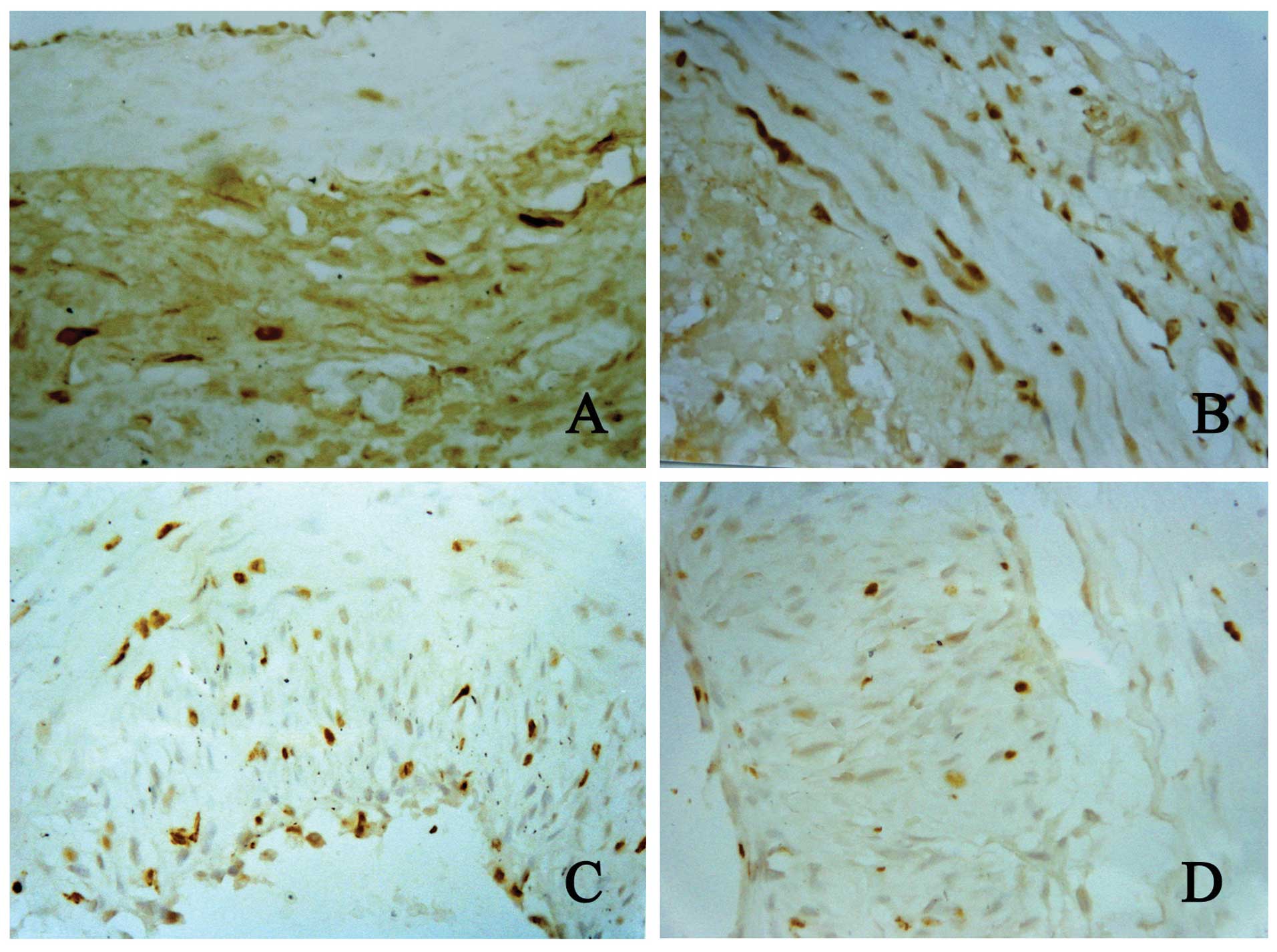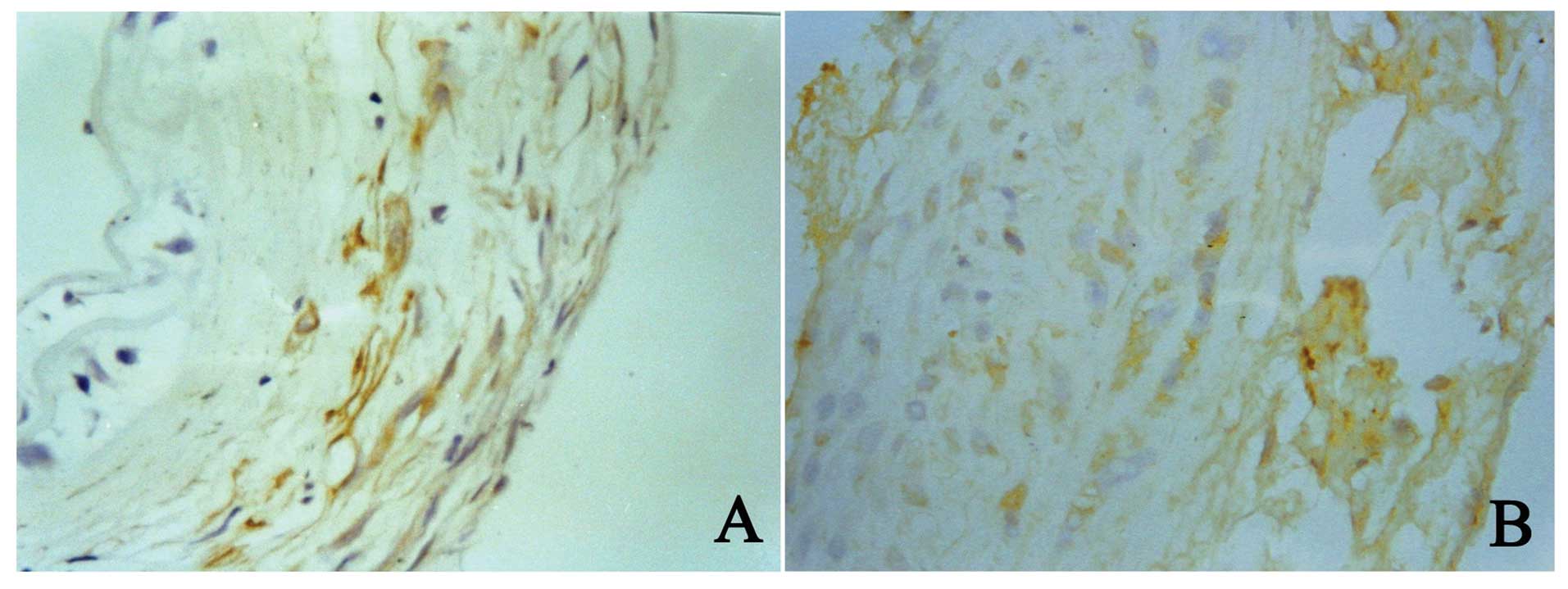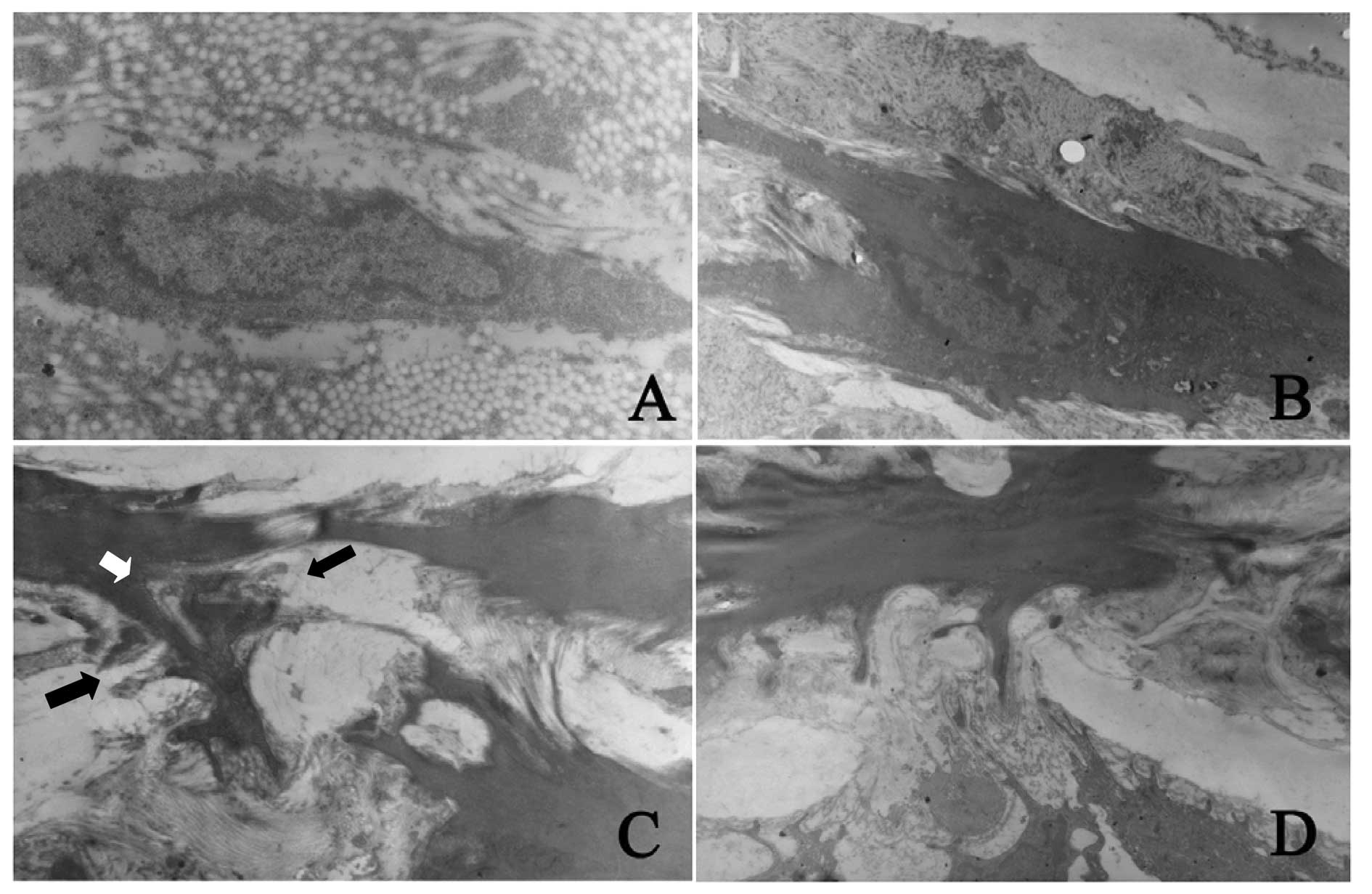|
1
|
Gutterman DD: Adventitia-dependent
influences on vascular function. Am J Physiol. 277:H1265–H1272.
1999.PubMed/NCBI
|
|
2
|
Barker SG, Tilling LC, Miller GC, et al:
The adventitia and atherogenesis: removal initiates intimal
proliferation in the rabbit which regresses on generation of a
‘neoadventitia’. Atherosclerosis. 105:131–144. 1994.PubMed/NCBI
|
|
3
|
Schneider DB, Sassani AB, Vassalli G,
Driscoll RM and Dichek DA: Adventitial delivery minimizes the
proinflammatory effects of adenoviral vectors. J Vasc Surg.
29:543–550. 1999. View Article : Google Scholar : PubMed/NCBI
|
|
4
|
Scott NA, Cipolla GD, Ross CE, Dunn B,
Martin FH, Simonet L and Wilcox JN: Identification of a potential
role for the adventitia in vascular lesion formation after balloon
overstretch injury of porcine coronary arteries. Circulation.
93:2178–2187. 1996. View Article : Google Scholar : PubMed/NCBI
|
|
5
|
Wilcox JN and Scott NA: Potential role of
the adventitia in arteritis and atherosclerosis. Int J Cardiol.
54(Suppl): S21–S35. 1996. View Article : Google Scholar : PubMed/NCBI
|
|
6
|
Shi Y, O’Brien JE, Fard A, et al:
Adventitial myofibroblasts contribute to neointimal formation in
injured porcine coronary arteries. Circulation. 94:1655–1664. 1996.
View Article : Google Scholar : PubMed/NCBI
|
|
7
|
Haurani MJ, Cifuentes ME, Shepard AD, et
al: Nox4 oxidase overexpression specifically decreases endogenous
Nox4 mRNA and inhibits angiotensin II-induced adventitial
myofibroblast migration. Hypertension. 52:143–149. 2008. View Article : Google Scholar
|
|
8
|
Hecto DL, Jeremy DO, Kathy KG, et al:
Adventitial cells do not contribute to neointimal mass after
balloon angioplasty of the rat common carotid artery. Circulation.
104:1591–1593. 2001.PubMed/NCBI
|
|
9
|
Fleenor BS and Bowles DK: Negligible
contribution of coronary adventitial fibroblasts to neointimal
formation following balloon angioplasty in swine. Am J Physiol
Heart Circ Physiol. 296:H1532–H1539. 2009. View Article : Google Scholar : PubMed/NCBI
|
|
10
|
Faggin E, Puato M, Zardo L, et al: Smooth
muscle-specific SM22 protein is expressed in the adventitial cells
of balloon-injured rabbit carotid artery. Arterioscler Thromb Vasc
Biol. 19:1393–1404. 1999. View Article : Google Scholar : PubMed/NCBI
|
|
11
|
Patel S, Shi Y, Niculescu R, Chung EH,
Martin JL and Zalewski A: Characteristics of coronary smooth muscle
cells and adventitial fibroblasts. Circulation. 101:524–532. 2000.
View Article : Google Scholar : PubMed/NCBI
|
|
12
|
Sipes JM, Guo N, Negre E, et al:
Inhibition of fibronectin binding and fibronectin-mediated cell
adhesion to collagen by a peptide from the second type I repeat of
thrombospondin. J Cell Biol. 121:469–477. 1993. View Article : Google Scholar : PubMed/NCBI
|
|
13
|
Skalli O, Darby I and Gabbiani G: Smooth
muscle actin is transiently expressed in by myofibroblasts during
experimental wound healing. Lab Invest. 63:21–29. 1990.PubMed/NCBI
|
|
14
|
Gabbiani G, Rungger-Brandle E, de
Chastonay C, et al: Vimentin-containing smooth muscle cells in
aortic intimal thickening after endotherlial injury. Lab Invest.
20:196–202. 1982.PubMed/NCBI
|
|
15
|
Marnur JD, Rossikhina M, Guha A, Fyfe B,
et al: Tissue factor is rapidly induced in arterial smooth muscle
after balloon injury. J Clin Invest. 91:2253–2259. 1993. View Article : Google Scholar : PubMed/NCBI
|
|
16
|
Reidy MA, Fingerle J and Linddner V:
Factors controlling the development of arterial lesions after
injury. Circulation. 86(Suppl 6): III43–III46. 1992.PubMed/NCBI
|
|
17
|
Hogeman B, Gillessen A, Bocker W, et al:
Myofibroblast-like cells produce mRNA for type I and III
procollagens in chronic active hepatitis. Scan J Gastroenterol.
28:591–594. 1993. View Article : Google Scholar : PubMed/NCBI
|
|
18
|
Wexberg P, Muck K, Windberger U, et al:
Adventitial response to intravascular brachytherapy in a rabbit
model of restenosis. Wien Klin Wochenschr. 116:190–195. 2004.
View Article : Google Scholar : PubMed/NCBI
|
|
19
|
Kingsley K, Huff JL, Rust WL, et al:
ERK1/2 mediates PDGF-BB stimulated vascular smooth muscle cell
proliferation and migration on laminin-5. Biochem Biophys Res
Commun. 293:1000–1006. 2002. View Article : Google Scholar : PubMed/NCBI
|
|
20
|
Wang Z and Newman WH: Smooth muscle cell
migration stimulated by interleukin 6 is associated with
cytoskeletal reorganization. J Surg Res. 111:261–266. 2003.
View Article : Google Scholar : PubMed/NCBI
|
|
21
|
Oparil S, Chen SJ, Chen YF, et al:
Estrogen attenuates the adventitial contribution to neointima
formation in injured rat carotid arteries. Cardiovasc Res.
44:608–614. 1999. View Article : Google Scholar : PubMed/NCBI
|
|
22
|
Mallawaarachchi CM, Weissberg PL and Siow
RC: Smad7 gene transfer attenuates adventitial cell migration and
vascular remodeling after balloon injury. Arterioscler Thromb Vasc
Biol. 25:1383–1387. 2005. View Article : Google Scholar : PubMed/NCBI
|
|
23
|
Torsney E, Hu Y and Xu Q: Adventitial
progenitor cells contribute to arteriosclerosis. Trends Cardiovasc
Med. 15:64–68. 2005. View Article : Google Scholar : PubMed/NCBI
|
|
24
|
Damrauer SM, Fisher MD, Wada H, et al: A20
inhibits post-angioplasty restenosis by blocking macrophage
trafficking and decreasing adventitial neovascularization.
Atherosclerosis. 211:404–408. 2010. View Article : Google Scholar
|
|
25
|
Li G, Chen YF, Greene GL, et al: Estrogen
inhibits vascular smooth muscle cell-dependent adventitial
fibroblast migration in vitro. Circulation. 100:1639–1645. 1999.
View Article : Google Scholar : PubMed/NCBI
|
|
26
|
Li G, Chen SJ, Oparil S, Chen YF and
Thompson JA: Direct in vivo evidence demonstrating neointimal
migration of adventitial fibroblasts after ballooninjury of rat
carotid arteries. Circulation. 101:1362–1365. 2000. View Article : Google Scholar : PubMed/NCBI
|
|
27
|
Appleby CE and Kingston PA: Gene therapy
for restenosis - what now, what next? Curr Gene Ther. 4:153–182.
2004. View Article : Google Scholar : PubMed/NCBI
|

















